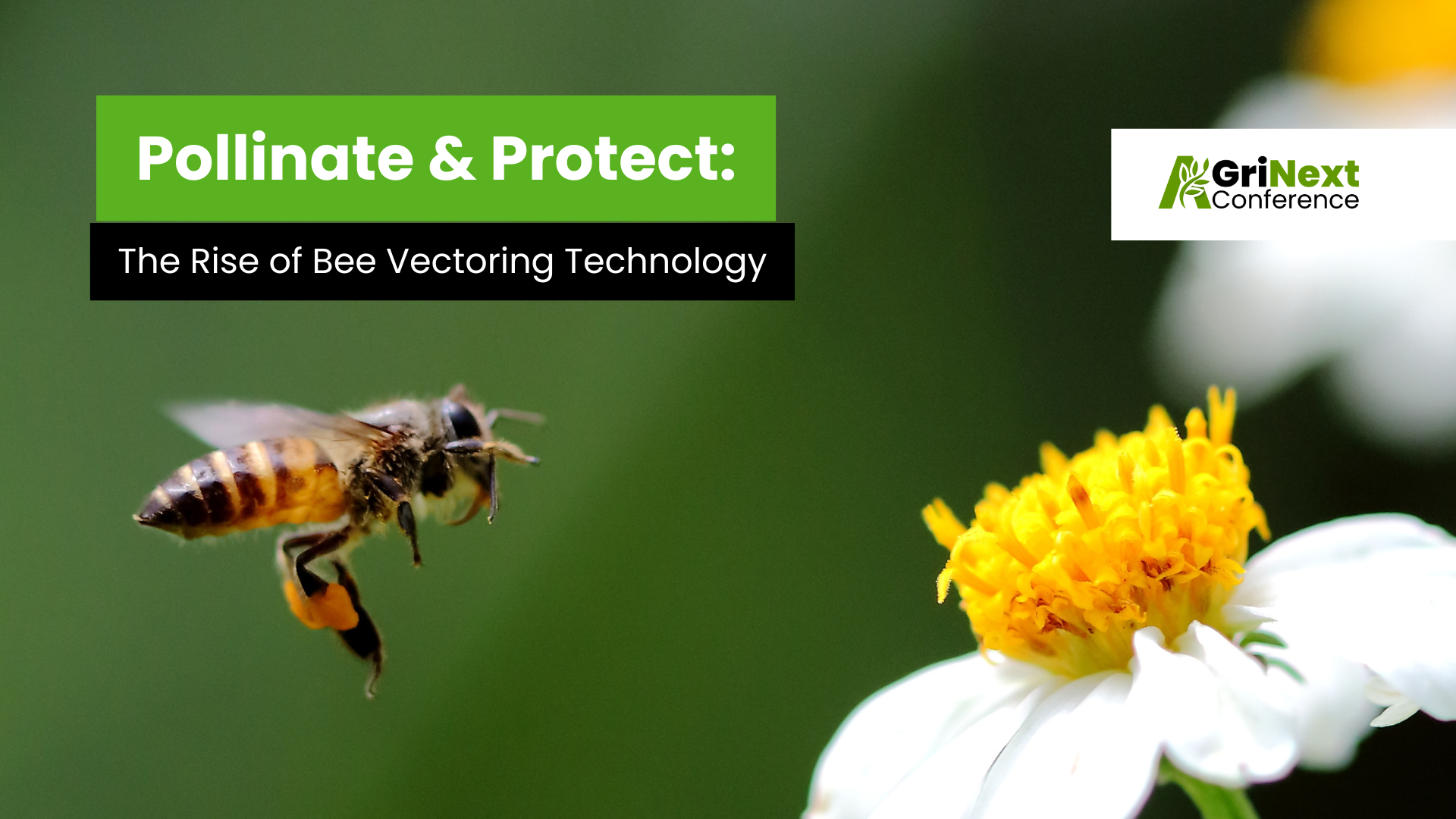
How bees are transforming sustainable agriculture through precision pest control.
A Buzz-Worthy Breakthrough in Sustainable Agriculture
In the realm of sustainable agriculture, bee vectoring technology is creating quite a buzz—literally. This innovative, eco-friendly technique utilizes bees not only for pollination but also for delivering biological agents directly to flowering crops. Instead of spraying chemical pesticides across fields, farmers now have the option to let honeybees and bumblebees carry beneficial microorganisms like Clonostachys rosea CR-7 straight to the flowers as they forage.
These natural agents protect crops from pests and diseases while boosting plant health—perfectly aligning with integrated pest management (IPM) and sustainability goals.
How Bee Vectoring Works
The process is simple yet elegant. Bees leave specially designed hives fitted with dispensers containing a powdered form of the biocontrol agent. As they exit, they pick up the powder on their bodies and spread it while visiting flowers.
Benefits: Eco-Friendly and Efficient
This targeted application reduces the need for broad-spectrum chemical sprays, thereby minimizing environmental contamination and conserving resources. Research and field applications have shown that bee vectoring can reduce pesticide usage by up to 80% and increase yields by nearly 30%.
Real-World Success Stories
Real-world examples from different parts of the globe highlight the versatility and effectiveness of this method. On a blueberry and sunflower farm in Ontario, Canada, bee vectoring led to a remarkable 30% increase in crop yields, along with a significant reduction in chemical use. In Morocco, tomato trials demonstrated strong efficacy, paving the way for the broader adoption of this technology. In Israel’s almond orchards, bumblebees are actively being used to deliver biopesticides, with results being compared to those of traditional spraying methods.
Similarly, greenhouse tomato farms in Turkey, Bee Vectoring Technologies (BVT), in partnership with BioGlobal and supported by the Turkish Ministry of Agriculture, conducted demonstration trials using bumblebees and beneficial microbes. The trials were deemed “extremely successful,” leading to the creation of an official protocol for commercial use of Clonostachys rosea CR‑7.
In Azerbaijan, BVT extended this collaboration with BioGlobal into similar greenhouse trials. Registration of the technology could be achieved within about a year, targeting crops like covered tomatoes, apricots, and berries across roughly 8,100 hectares of farming.
Elsewhere in the region, BVT continues tomato trials in Morocco and almond orchard tests in Israel through their partner Lidorr Elements. The Israeli experiments are comparing bee-delivered CR-7 to conventional sprays, with plans to extend trials to strawberries and tomatoes.
Expanding Horizons: Scalable and Inclusive
These cases—from Turkey’s government-backed greenhouse trials to Azerbaijan’s fast-track registration preparation—demonstrate the flexibility and scalability of bee vectoring across varied climates and production systems.
The approach has also reached smallholder and indigenous communities. In the Philippines, farmers are turning to bee vectoring as a sustainable alternative to chemical sprays—preserving biodiversity while protecting crops. A more recent trial in Ontario saw bee vectoring used to manage aphids in barley crops, helping reduce the spread of the barley yellow dwarf virus. These examples underscore bee vectoring’s potential across diverse climates and crops—from berries and tomatoes to almonds and sunflowers.
As the agricultural sector moves toward smarter and more sustainable solutions, bee vectoring stands out as a breakthrough that combines precision pest management, pollination, and environmental responsibility in one seamless approach.
Bee Vectoring at AgriNext 2025
AgriNext 2025, a leading platform for agri-tech innovations, is expected to spotlight this promising technology alongside other advancements. With startups, researchers, and agribusiness leaders converging at the event, bee vectoring will surely be part of the conversation shaping the future of sustainable farming.
Reference
Signup For AgriNext Conference Newsletter

